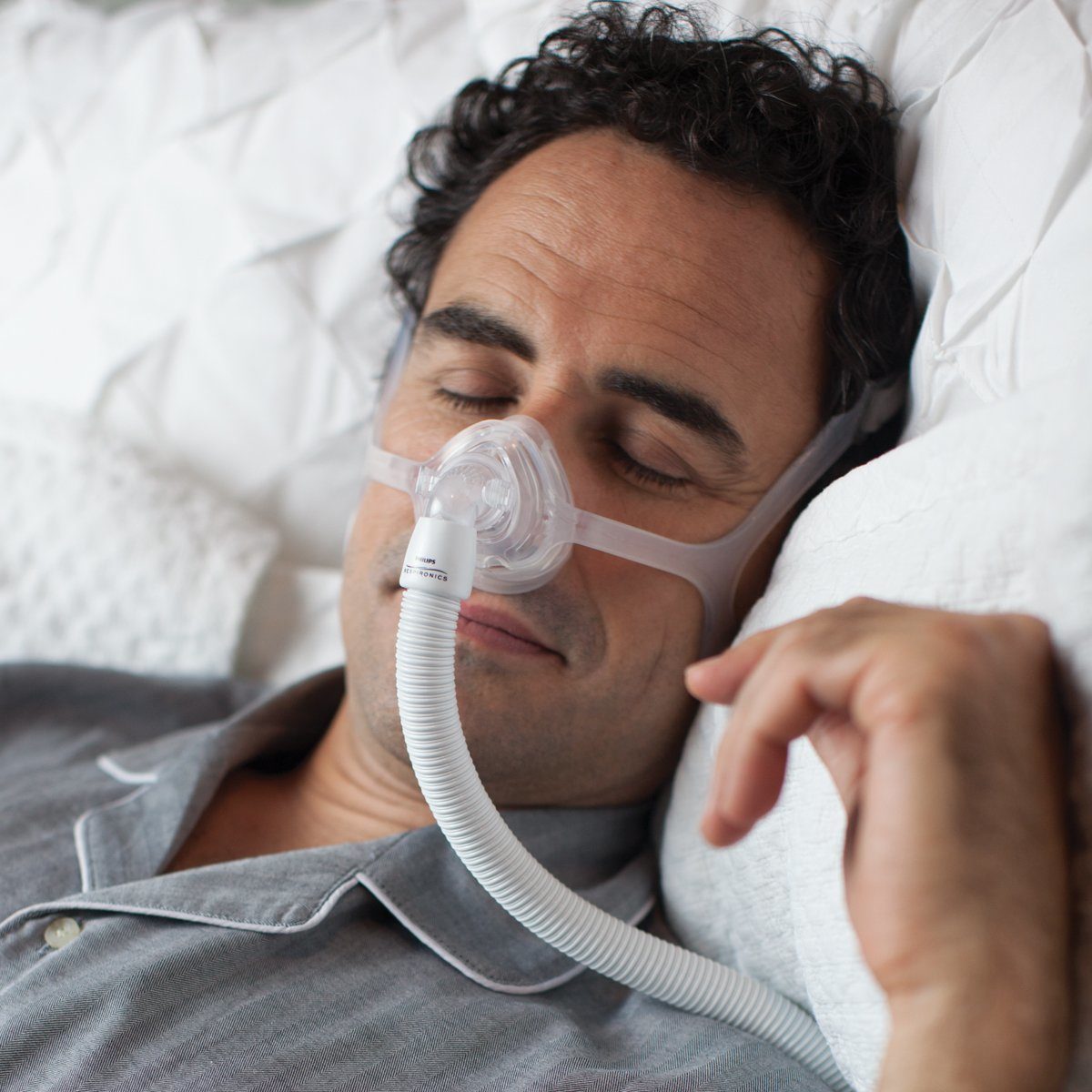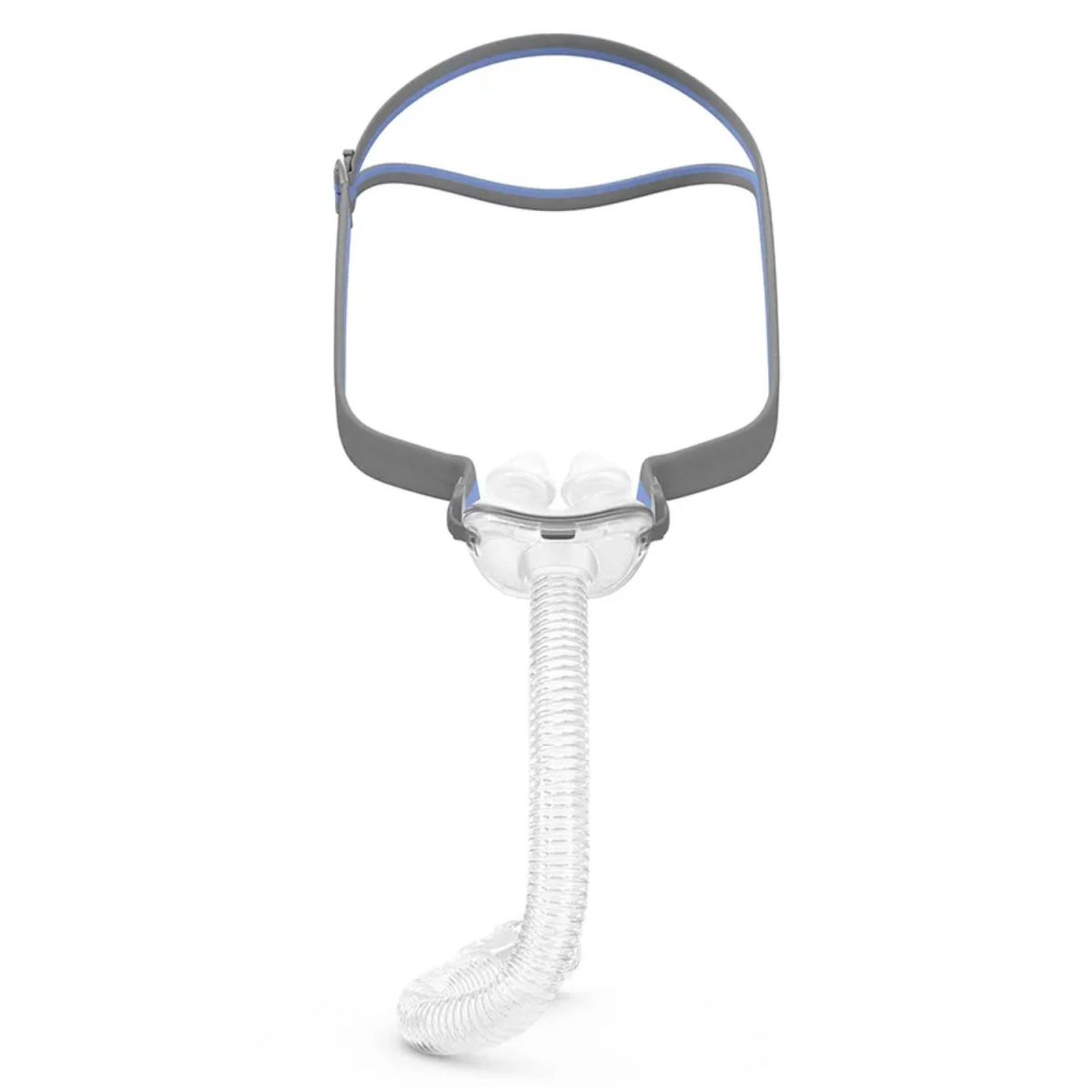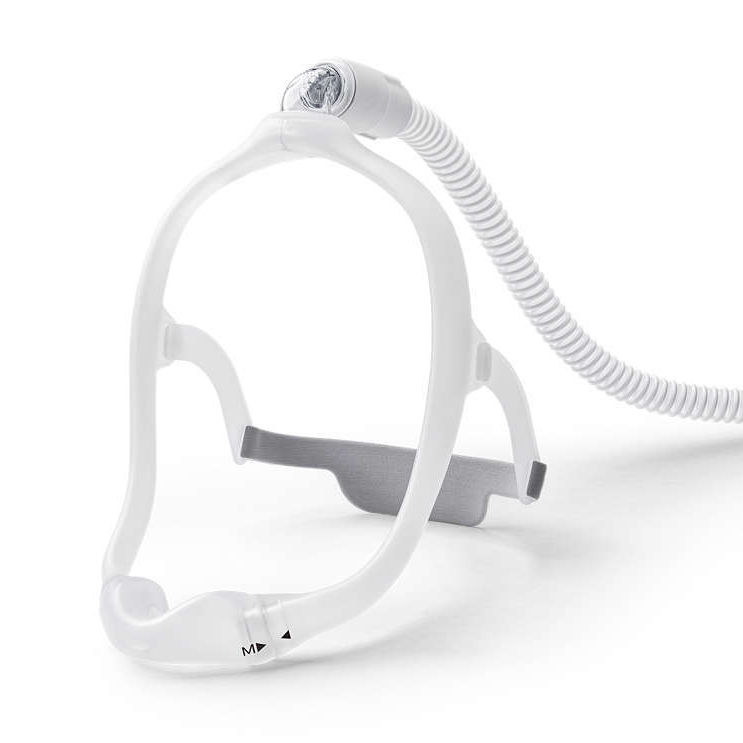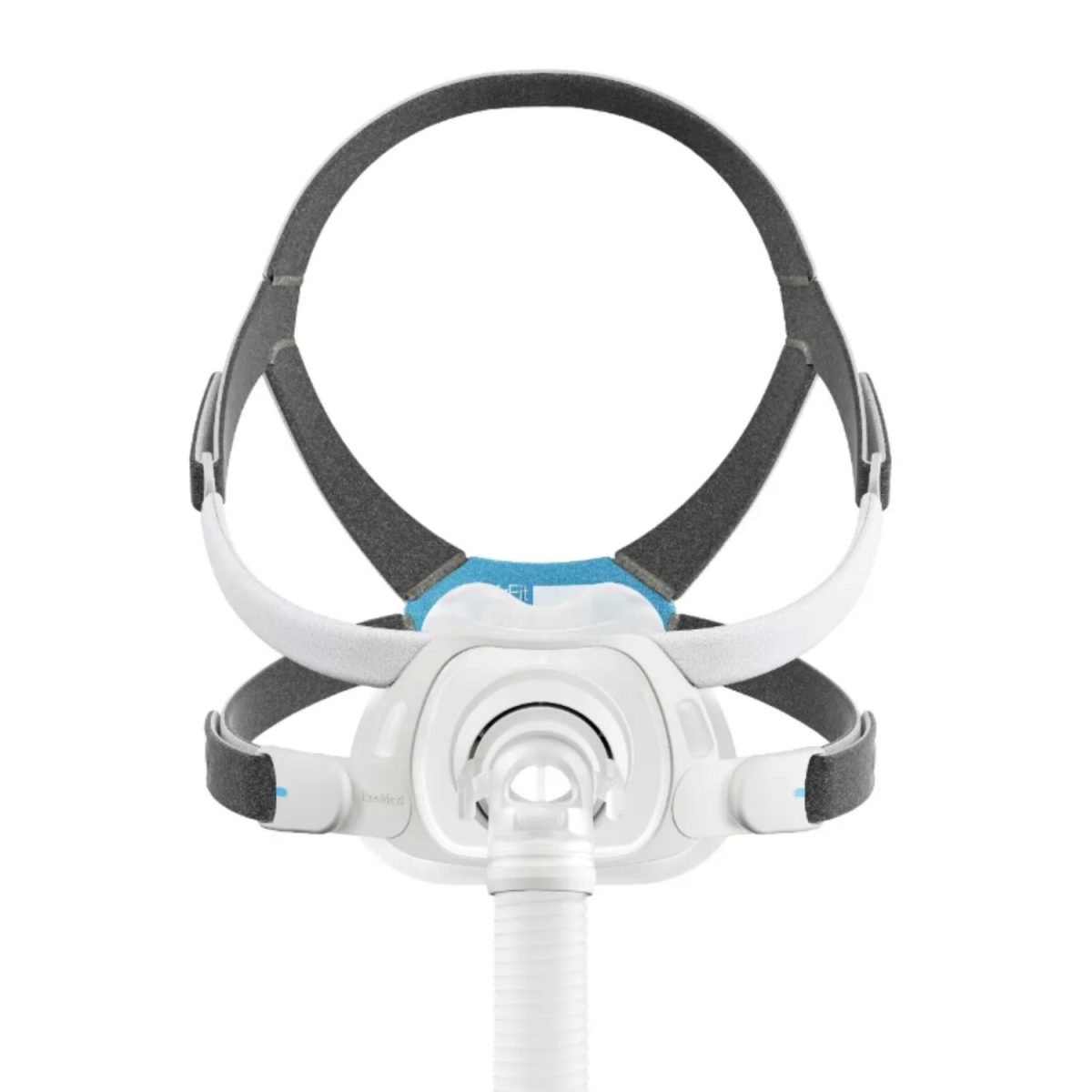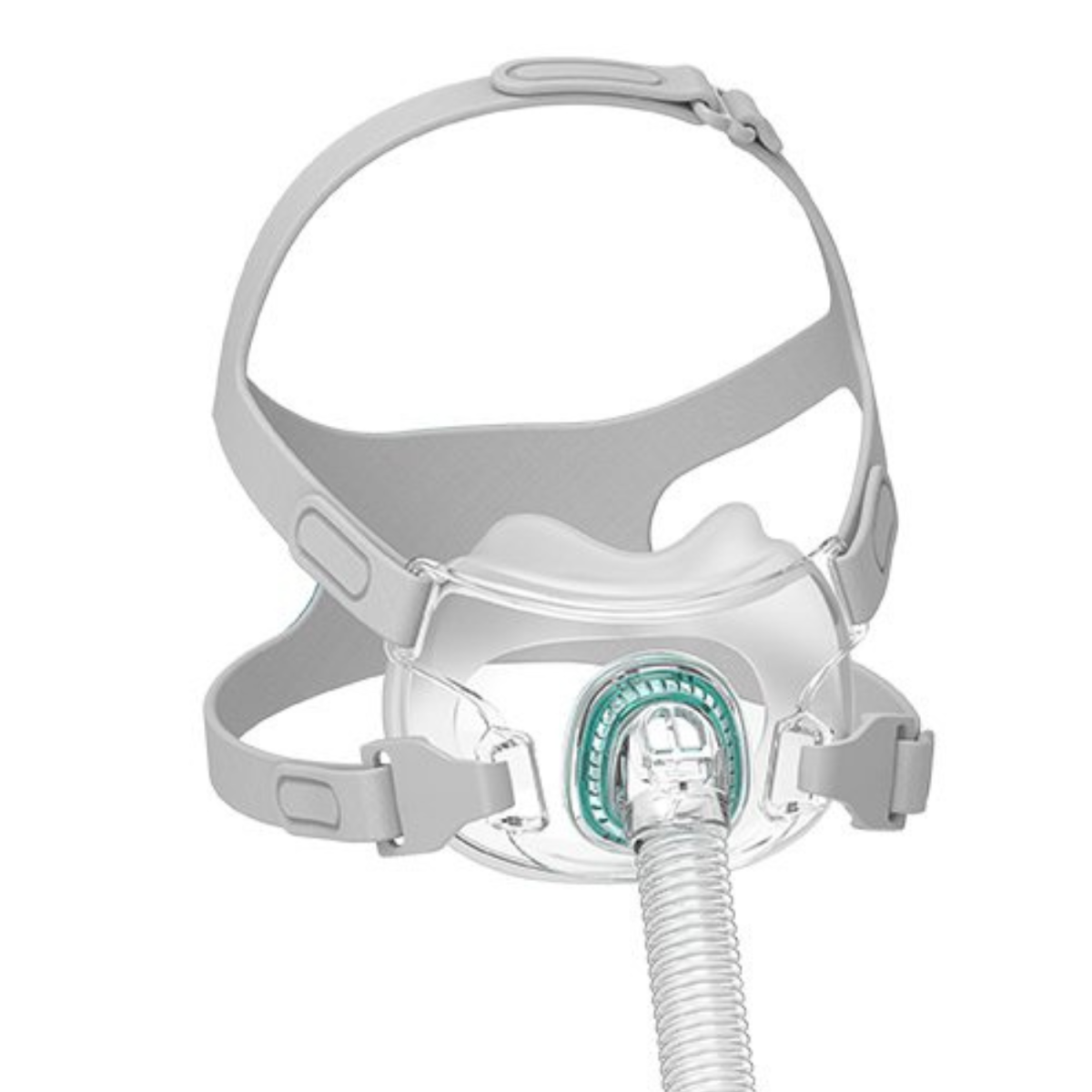Nasal pillow CPAP masks are usually the smallest, with a more compact interface than nasal cushion masks as they don’t need to sit around the nose but rather on the nostrils. This makes side-sleeping while using CPAP much easier.
Last updated on November 28th, 2024 at 12:11 pm
The key to a good night’s sleep is comfort, and central to that comfort is your sleeping position.
For those who suffer from the sleep disorder Obstructive Sleep Apnoea (OSA), sleeping position plays a huge role in the effectiveness of their CPAP therapy.
The seal of your CPAP mask reflects the comfort of your therapy, and your sleeping position can disrupt the seal – Causing leaks and a dry mouth or throat.
Let’s see how you can use your CPAP device and sleep on your side comfortably.

What is CPAP?
CPAP therapy is a worldwide treatment for sleep apnea.
Sleep apnoea is a sleep disorder where the airway closes, causing breathing pauses (apnoeas) throughout the night. When left untreated, the disorder prevents sleep, and people wake up constantly tired.
Snoring, choking during sleep and morning headaches are common symptoms of Sleep Apnoea.
A CPAP machine provides continuous air pressure to the user through a CPAP tube into their CPAP mask. To keep the airway from closing during sleep.
Can I sleep on my side with CPAP?
Yes, you can. We’ve got some tips to make side sleeping with your therapy as comfortable as possible.
Sleeping on your side is one of the healthiest positions, and 60% of adults sleep on their side (1). Side sleeping is excellent for spinal alignment and can be great for your body and mind.
Your digestive system functions better when you sleep on your side, helping your gut health—relieving gastrointestinal issues such as bloating, heartburn and constipation.
Research shows that sleeping on your side may benefit your overall brain health.
Does side-sleeping stop Sleep Apnoea?
No, it does not prevent Sleep Apnoea but it helps to reduce symptoms. Here are some benefits of side sleeping:
- Sleeping on your side prevents your tongue from falling to the back of your throat, causing an obstruction to your airway.
- Helps to make breathing easier and relieves OSA symptoms.
- Reduces snoring and promotes good airflow and lower back pain relief.
If you find sleeping on your side uncomfortable, consider using a firmer mattress and pillows.
Left side-sleeping with CPAP
Sleeping on your left side is recommended when you have Sleep Apnoea because it allows for blood flow and reduces resistance to breathing.
Right side-sleeping with CPAP
Some people find that sleeping on their right side can cause neck or back complications – putting a pillow between your knees can alleviate this issue.
However, if you suffer from acid reflux, speak to your doctor before sleeping on your right side, as this sleep position can aggravate symptoms of acid reflux.
Ways to sleep on your side with a CPAP mask
Sleeping on your side with a CPAP mask isn’t always easy.
Sleeping on your side with a CPAP mask means that when it touches the pillow, it can break the seal or push into your face.
A common CPAP mask complaint is red facial marks that can look like a ring rash. These side effects can be solved; red marks usually result from an ill-fitting mask. Please read our blog on solving red marks and skin damage from your CPAP mask for helpful tips and tricks.
It’s uncomfortable and far from ideal when mask leaks and red marks occur.
Is there a way to make side-sleeping with CPAP more comfortable? Yes, and there are several ways around this problem – it’s just finding out which method suits you.
Consider a CPAP mask for side-sleepers designed with flexible fabric and easy movement for side sleeping.These masks are lower-profile to provide more freedom to move. The bigger the mask, the more likely it is to come into contact with the pillow.
Consider a nasal mask if you breathe only through your nose during sleep.
There is also a range of full face mask styles designed to make side sleeping more comfortable. This style of mask is recommended for those who breathe through their mouth or mouth and nose during sleep.
Another option is the SleepWeaver CPAP mask range. These masks are skin-friendly, keeping the area between the skin and the mask dry. They are made of cloth rather than plastic.
Reducing skin irritation with the breathable fabric. Consider these masks if you have a silicone or latex allergy; they’re made entirely of soft fabric.
As the SleepWeaver is made of soft fabric, it just changes shape as it needs to, so you don’t have the problem of it instantly dislodging – and it certainly won’t dig into your face.
These examples of masks for side sleepers might not be the best CPAP mask for you. It all depends on the individual.
Products to help you sleep on your side
CPAP Pillow for side sleepers
The CPAP pillow is specifically shaped for CPAP users who sleep on their side.
The pillow has cut-out sections to allow the mask to sit unrestricted when sleeping on your side. You get the comfort of sleeping on your side, with the security of your mask not making any contact with the pillow – no mask leaks, no digging in, no discomfort.
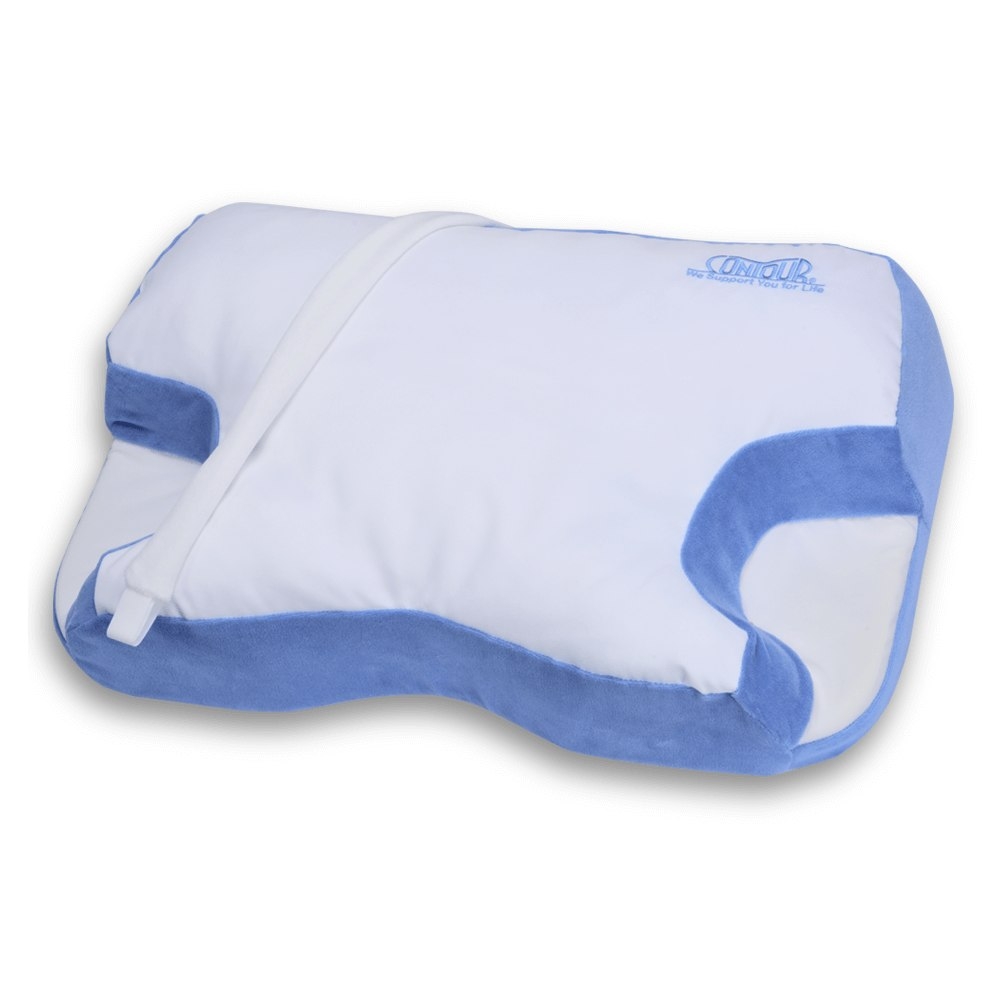
CPAP hose lift
A hose lift won’t solve specific problems, but it will make sleeping feel more natural. The device lifts the hose above the bed, out of the way of your chest and arms.
When sleeping on your side, the hose can get tangled or pulled on by your arms as you shift position, dislodging the mask.
The hose lift allows you to change position more easily and naturally.
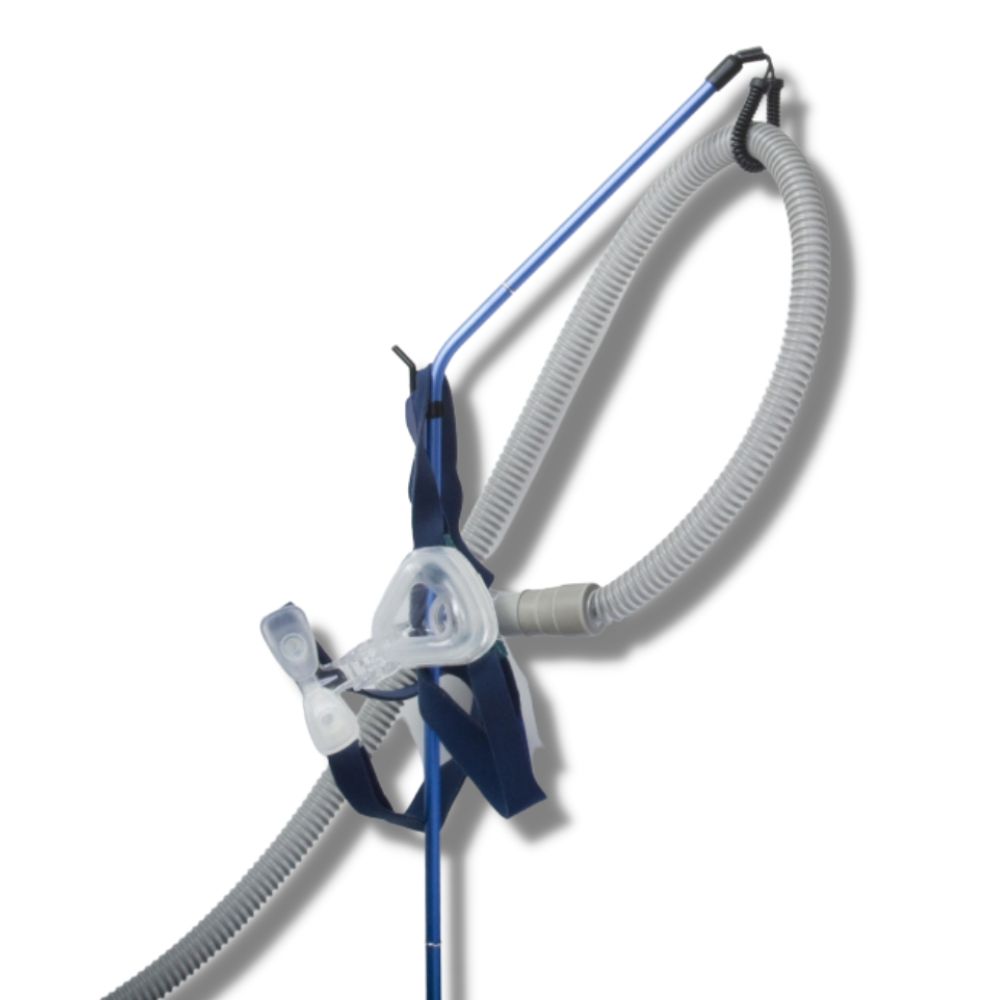
Positional therapy
The Somnibel Positional Sleep Therapy Trainer is a small vibrating device that sits on the forehead or chest.
The device vibrates when the user positions themselves on their back, encourages them to sleep on their side..
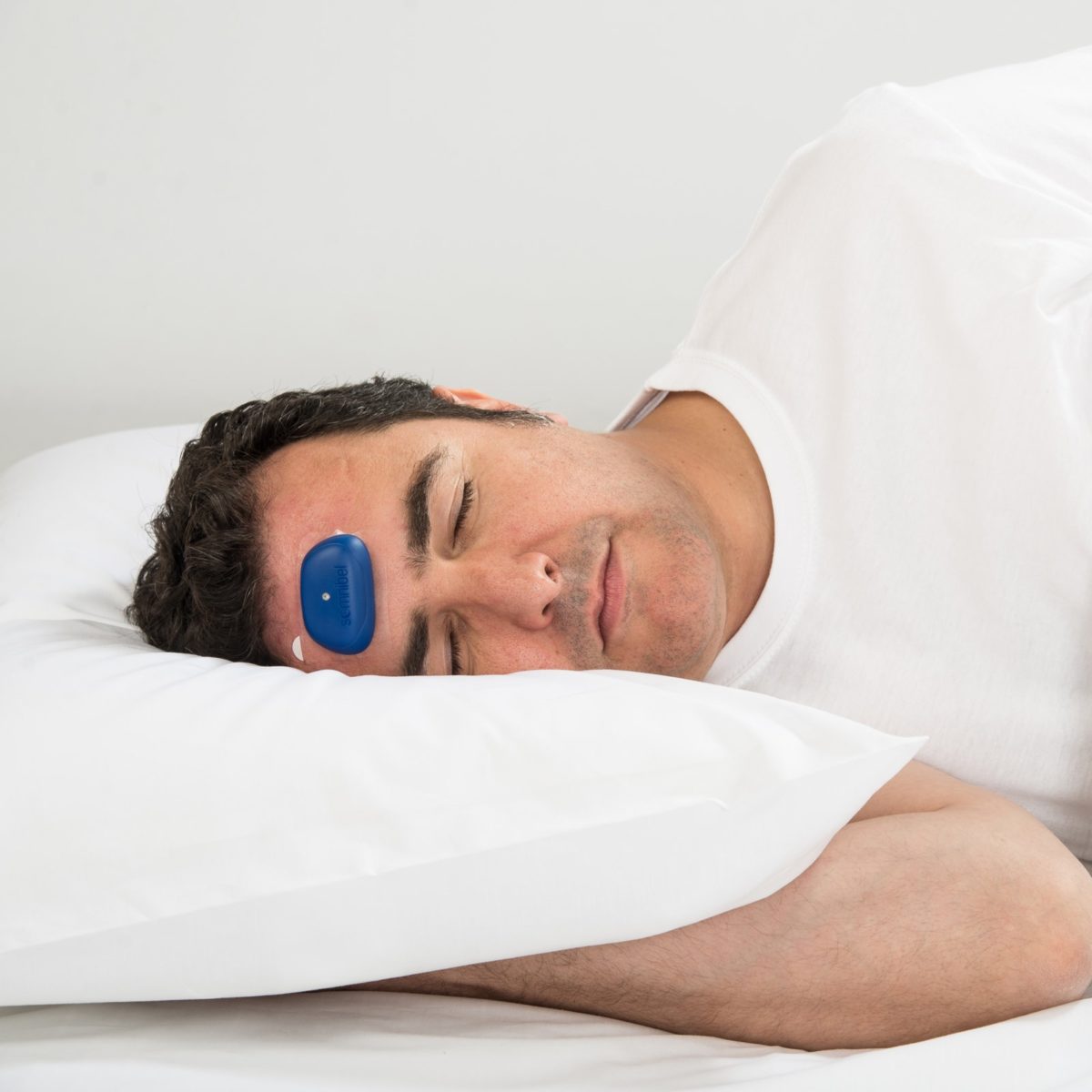
Round Up
Do not resign yourself to a lifetime of unnatural sleeping positions – if you naturally tend to sleep on your side, do it.
CPAP is supposed to give you a better night’s sleep, not simply solve one problem by replacing it with a different one. For side-sleepers, the right CPAP mask, and the right bedding, can make all the difference.
Please don’t give up on your CPAP therapy because you cannot sleep comfortably.
If you’re able to sleep in the position you want to, then naturally, you’ll get better quality sleep and all of the benefits that come with it.
The fewer sleep obstructions, the better you’ll sleep.
If you need any further help, please contact us. We are happy to help.
References:
- Cary D, Briffa K, McKenna L. 2019. Identifying relationships between sleep posture and non-specific spinal symptoms in adults: A scoping review. BMJ Open. Available at: https://pubmed.ncbi.nlm.nih.gov/31256029/. Accessed: 28.11.2024.

